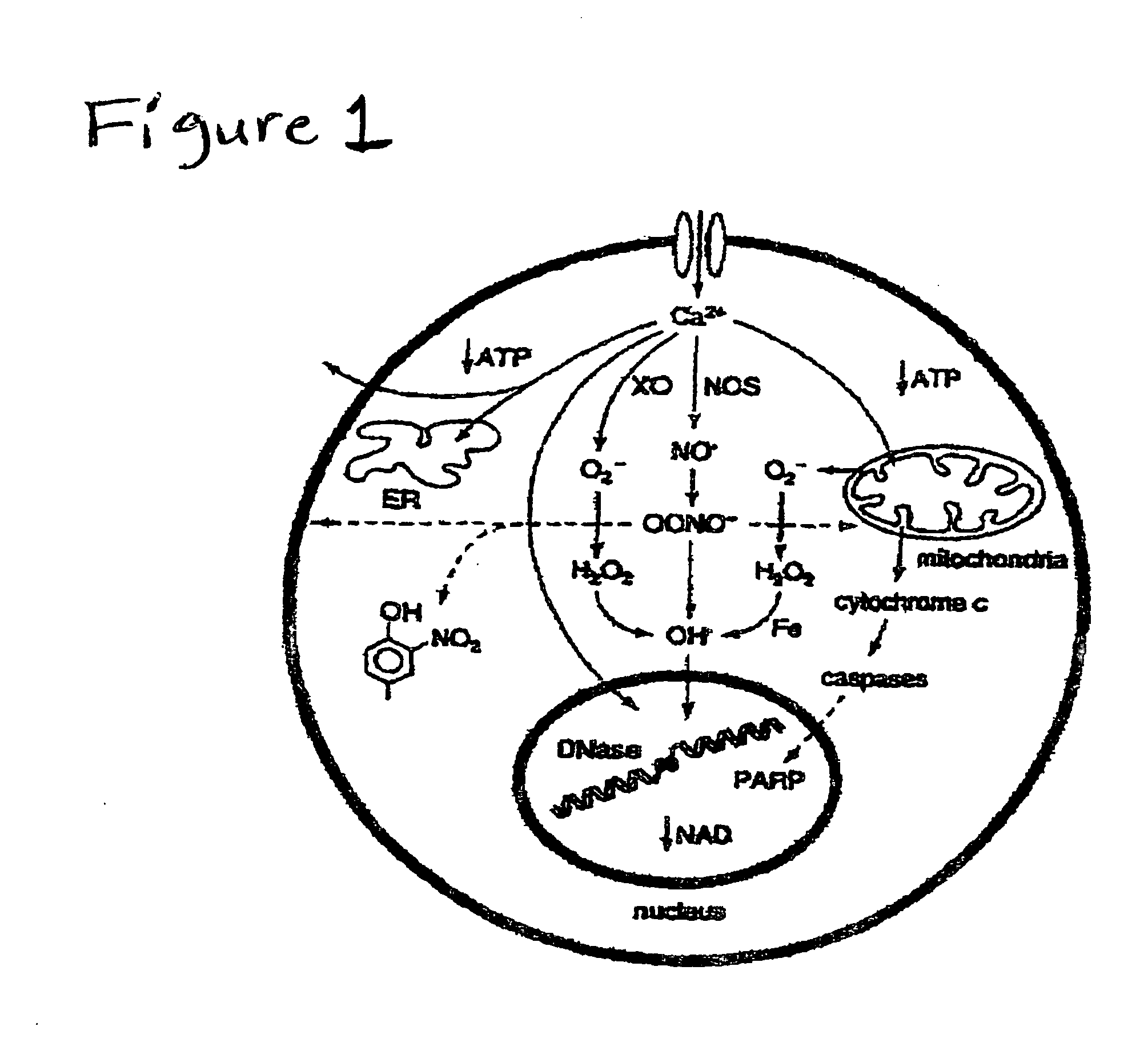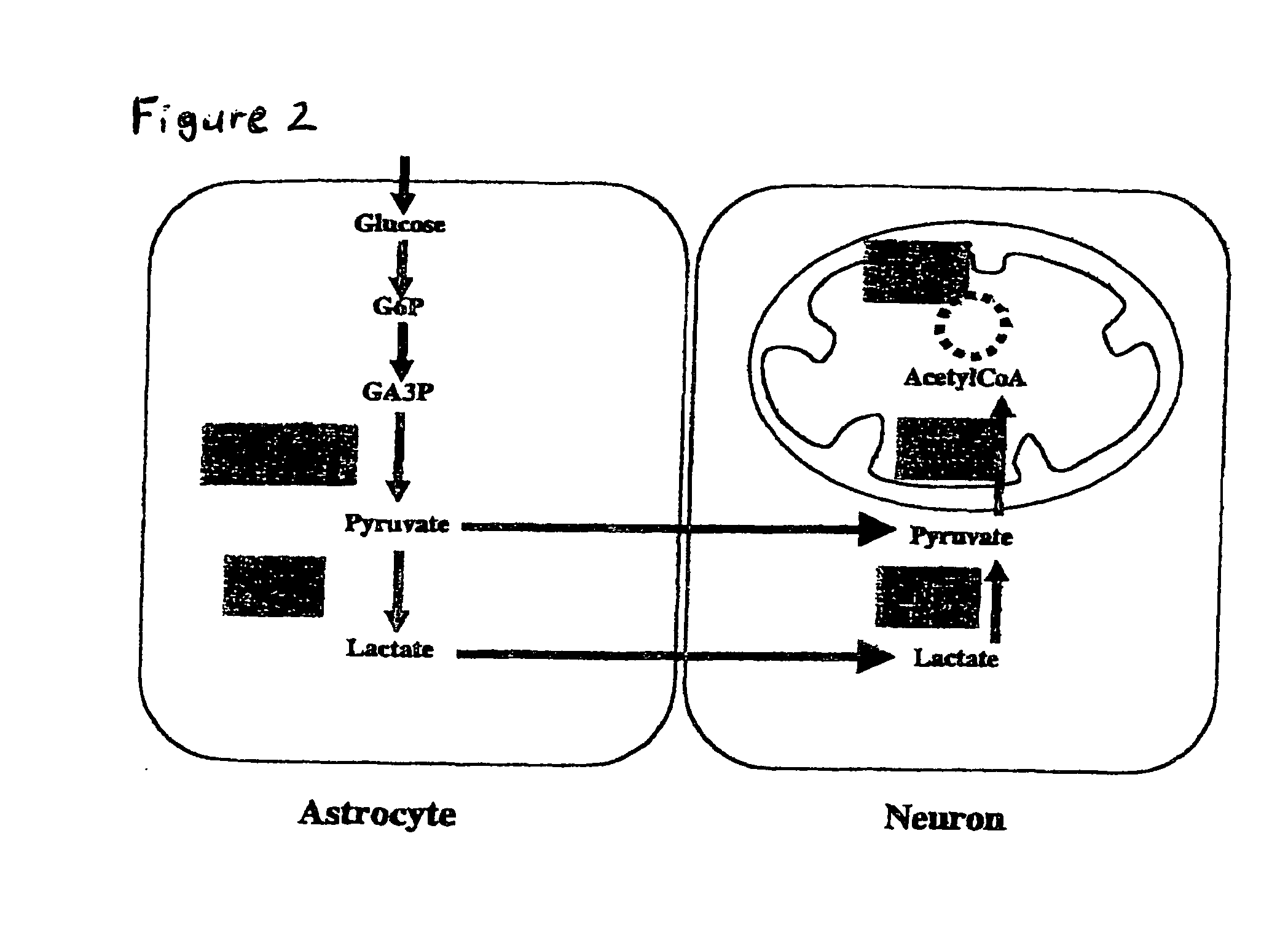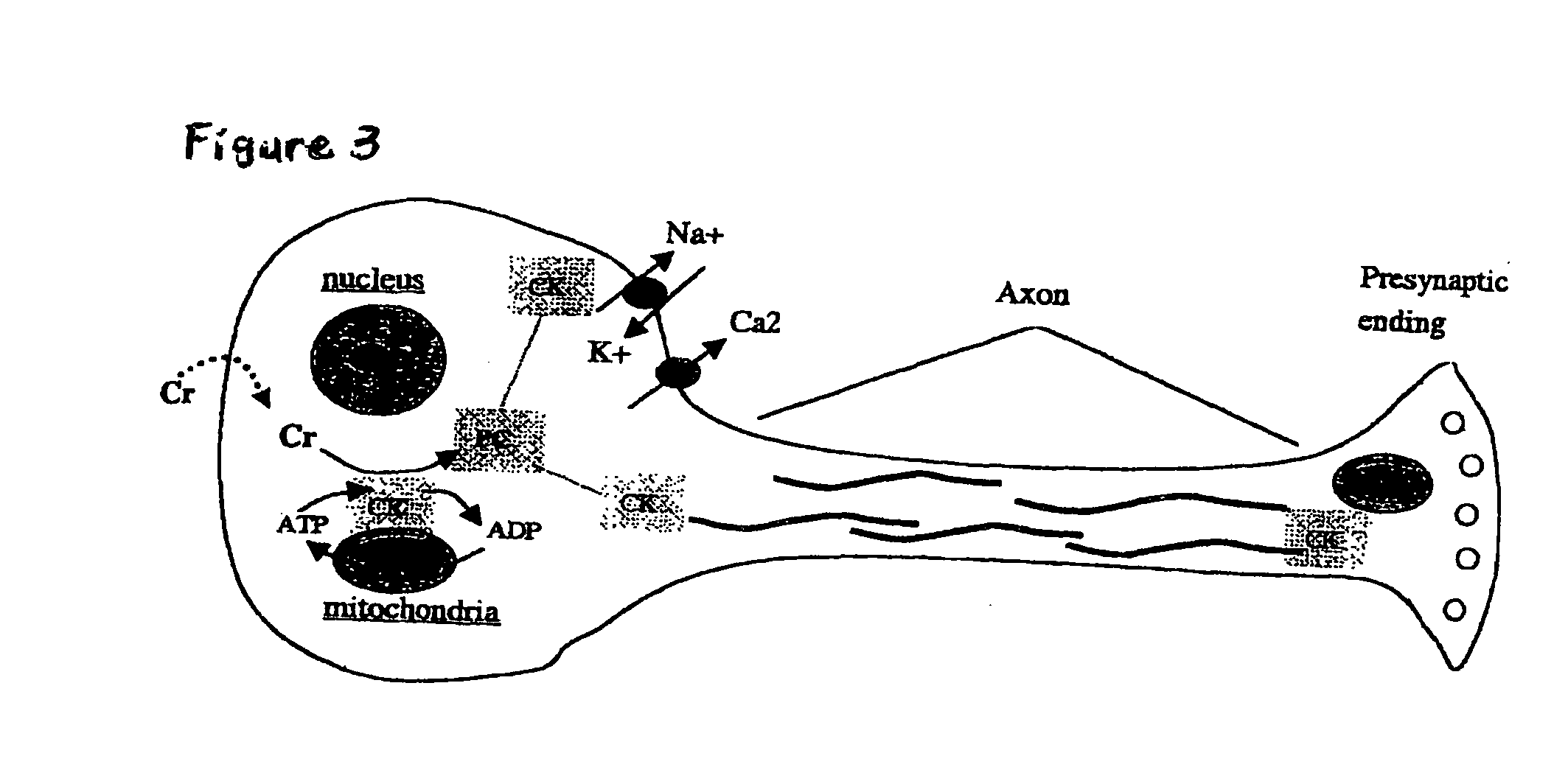Cellular phosphorylation potential enhancing compositions preparation and use thereof
a phosphorylation potential and composition technology, applied in the field of cell biology, neurology, physiology, medicine, can solve the problems of cellular calcium overload, oxidative stress, and calcium overload inside cells, and achieve the effects of enhancing astrocytic lactate/pyruvate production, enhancing brain levels of nad and creatine, and fast consumption by all cells
- Summary
- Abstract
- Description
- Claims
- Application Information
AI Technical Summary
Benefits of technology
Problems solved by technology
Method used
Image
Examples
Embodiment Construction
[0049]NOVEL FEATURES: Biological activity has been discovered for a pharmaceutical composition whose dominant function is to be either (1) reactive with antigens (to neutralize viruses or coat bacteria) which may be released, separate and in sequence with, a salt of an alpha-keto carboxylic acid wherein the salt enhances the phosphorylation potential and reduces hydrogen load within the cell thereby preventing the deterioration or promoting the restoration and preservation of normal cell functions or (2) enhance the phosphorylation potential and reduce the hydrogen load within the cell thereby preserving or improving cell functions. Additionally, biological activity has been discovered for a pharmaceutical composition whose dominant function is to decrease the activity of the (hepatic) HMG CoA reductase and hence cholesterol biosynthesis. The resulting decrease in intracellular cholesterol will stimulate the production of LDL receptors and hence accelerate cellular uptake of plasma ...
PUM
 Login to View More
Login to View More Abstract
Description
Claims
Application Information
 Login to View More
Login to View More - R&D
- Intellectual Property
- Life Sciences
- Materials
- Tech Scout
- Unparalleled Data Quality
- Higher Quality Content
- 60% Fewer Hallucinations
Browse by: Latest US Patents, China's latest patents, Technical Efficacy Thesaurus, Application Domain, Technology Topic, Popular Technical Reports.
© 2025 PatSnap. All rights reserved.Legal|Privacy policy|Modern Slavery Act Transparency Statement|Sitemap|About US| Contact US: help@patsnap.com



